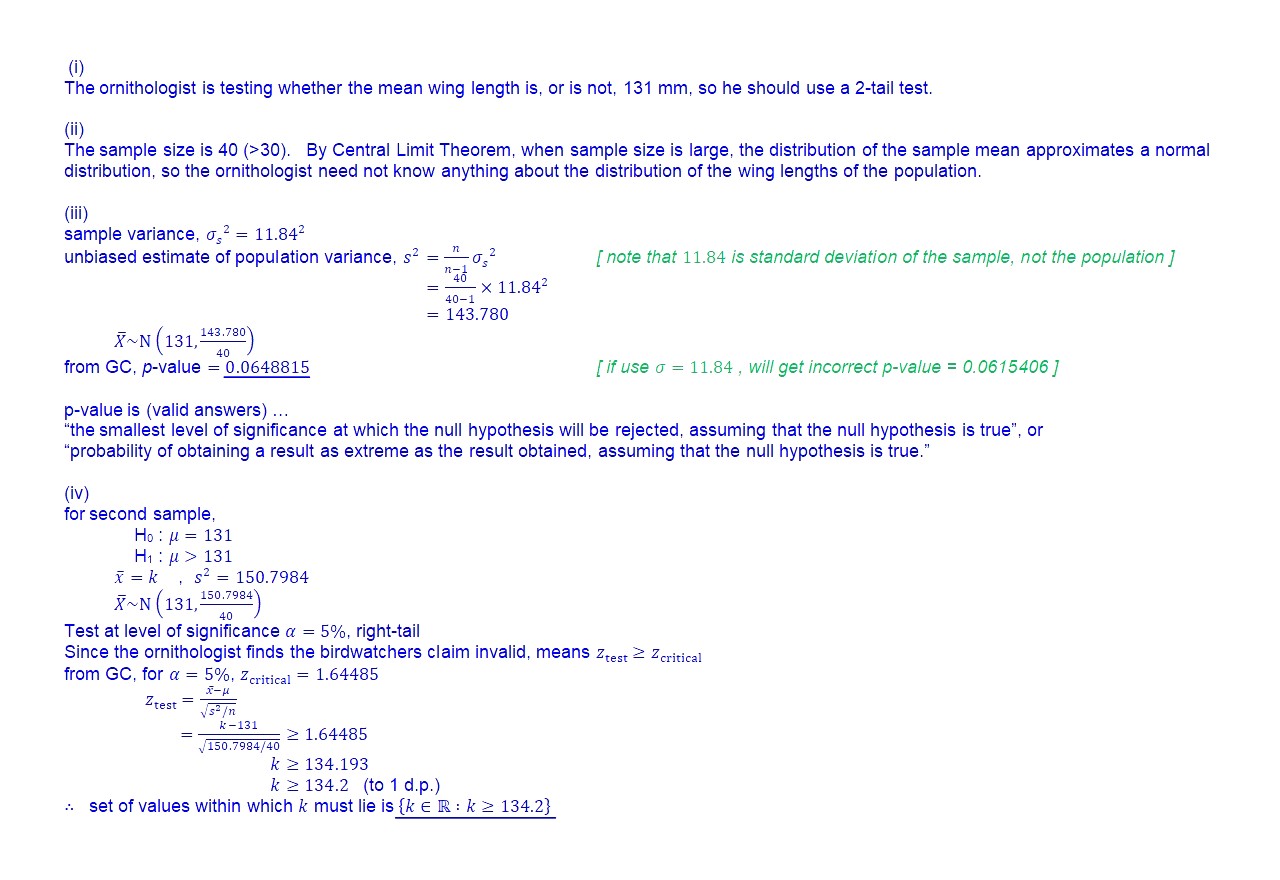Ask Singapore Homework?
Upload a photo of a Singapore homework and someone will email you the solution for free.

Question
junior college 1 | H1 Maths
One Answer Below
Anyone can contribute an answer, even non-tutors.

For (i) is it a 2-tail test since it mentioned "an omithologist doubts this claim" ?
(ii) how do I answer this?
(iii) Using sample data of n = 40, x bar = 127.5, sigma = 11.84 and Mo = 131 and choose M not equal to Mo to get the p-value from GC?
How to do the last part?
See 1 Answer
(iv) You have accidently cropped out the last statement of the original question. The last statement is ...
"Find the set of values within which k must lie. Leave your answer correct to 1 decimal place."
"In the context of this question, p-value of 0.06488 means that there is 6.488% probability of obtaining a mean wing length as extreme as 127.5 mm, assuming that the mean wing length is 131 mm."
The alternate hypothesis would be the opposite, that is, the mean wing length is greater than 131mm.
Remember that for any hypothesis test, we always assume that the null hypothesis is true, unless there is strong evidence otherwise.
An observed mean wing length of slightly more than 131mm, could have just happened just by chance, and does not provide strong enough evidence to reject the birdwatcher's claim that mean length is at most 131mm.
For the ornithologist to have found the birdwatcher's claim invalid, he must have an observed mean wing length that is far greater than 131mm, and is so extreme that it is quite unlikely to occur just by chance (in this case less than 5% probability).




